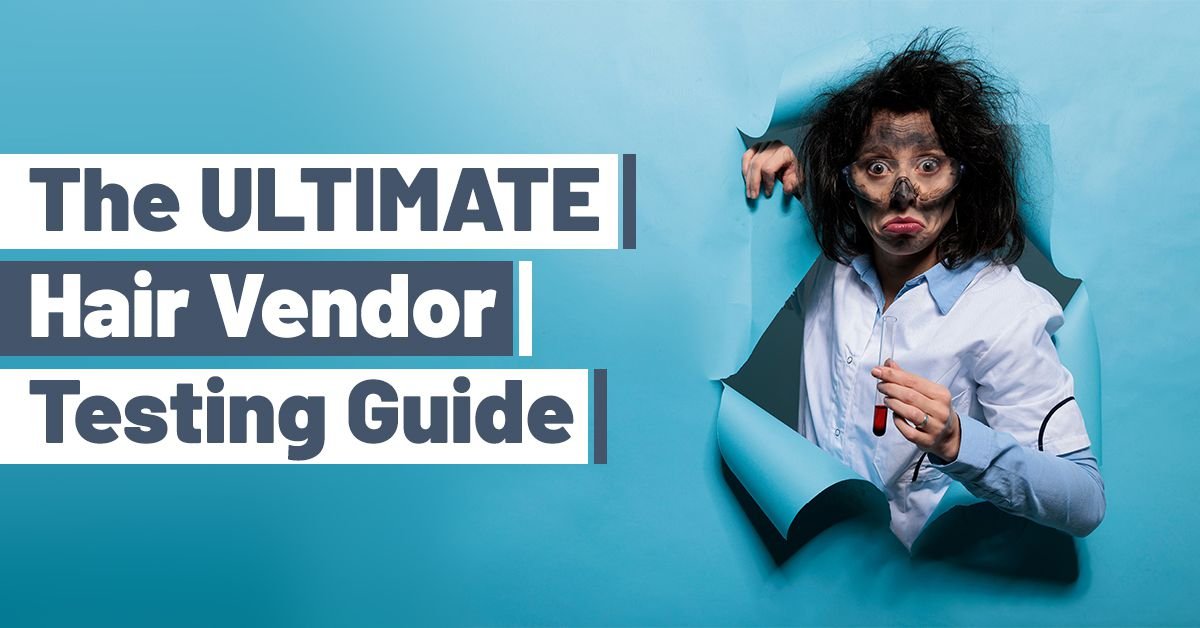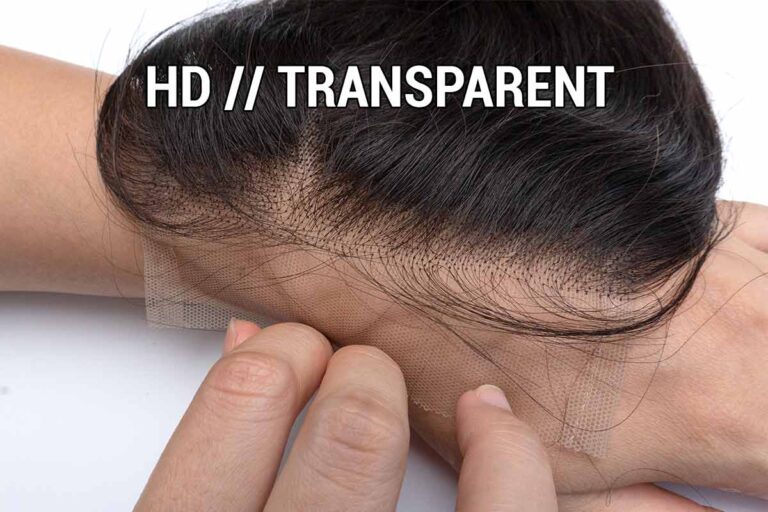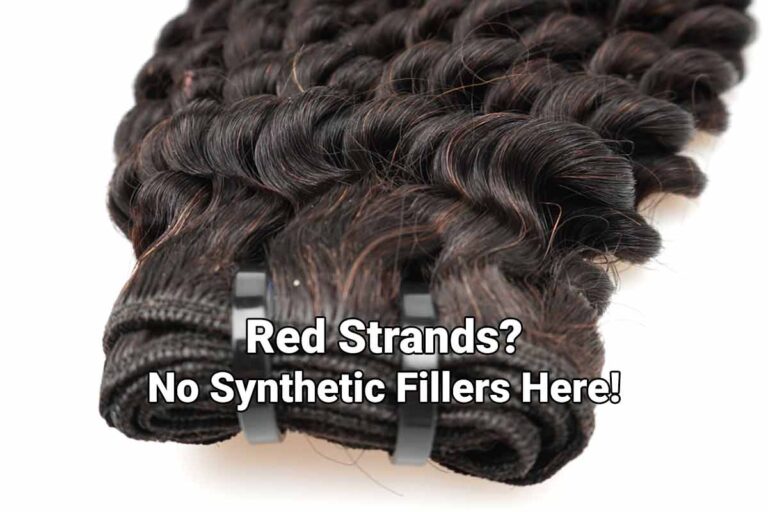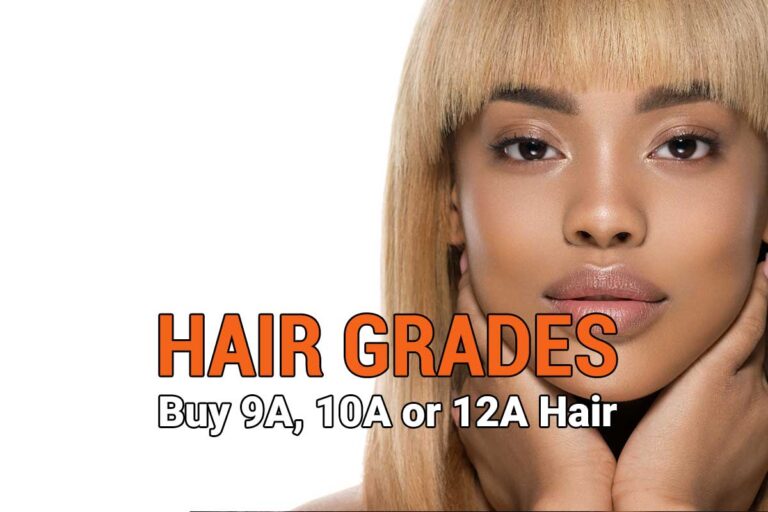You Know Nothing About Quality Hair. Let’s Fix That.
Testing hair vendors can become quite expensive quickly, but it doesn’t have to be. People look for “good” hair, which is too subjective. A Lamborghini is a good car on a racetrack, but that doesn’t make it suitable for picking up your children from school. You will have to be more specific.
It would be best to become specific about your goals and understand where hair quality differences originate. This way, you will know what to look for and test for.
Keep reading to learn more about hair quality, hair testing, and how to save money when trying vendors. The road to success starts with knowledge!
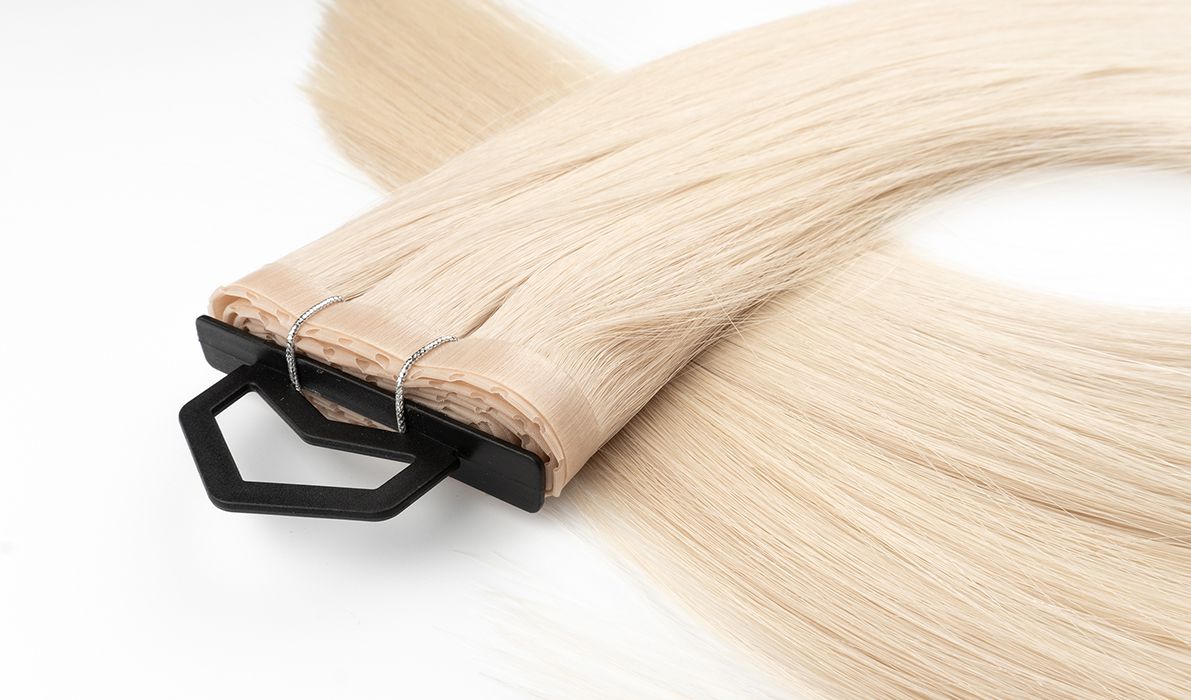
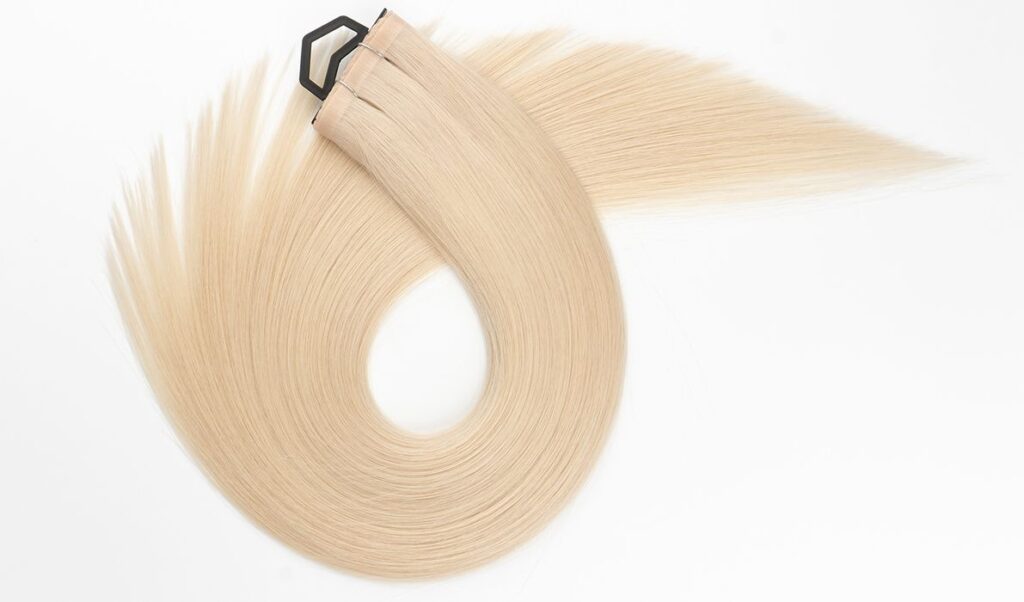
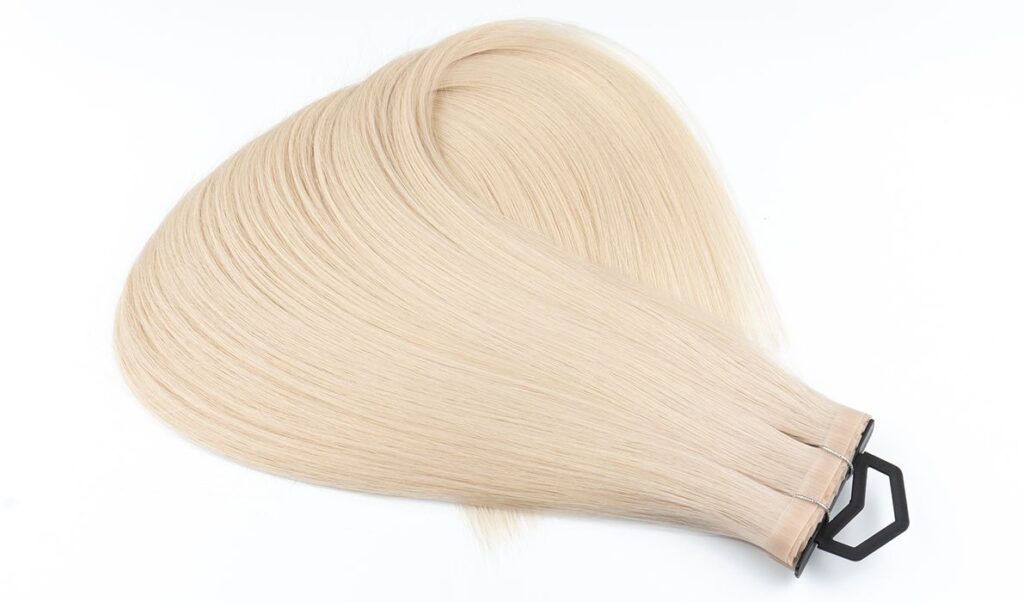
Table of Contents
The Two Types of Human Hair
There are two types of Human Hair: Cuticle Aligned Hair and Floor Hair. All the different qualities you see on the market are either one, the other, or a mix between the two. And if we’re not just talking about human hair, we still have synthetic and animal hair. These will sometimes get mixed in with the lower qualities to save on costs.
Cuticle Aligned Hair
Start with a girl and either cut or shave her hair off. Now you have cuticle-aligned hair. The collector must tie the hair up to ensure that the cuticles stay in the same direction. This way, the cuticles are aligned, and the hair will be in its natural state and will not tangle. This is the main reason why it doesn’t have to get processed.
Floor Hair
Hair that isn’t cut directly from a donor is called floor hair. The hair’s cuticles are in a different direction and are roughly 50/50. The friction of this non-remy hair would cause it to tangle. This is why it needs to get processed.
There are two main ways to process hair:
- Use a Non-Remy to Remy Machine to turn it into cuticle-aligned hair. The next step is to give it an acid bath and strip some of the cuticles.
- Process it directly and completely strip the cuticles in acid.
Quality Hair Varieties: Raw Hair, Virgin Hair, and Remy Hair
Stop using these labels to describe hair quality. They have become useless without context. They aren’t that useful in explaining the differences between hair qualities. This is what we believe to be an accurate description of raw, virgin, and remy hair:
- Raw hair is 100% unprocessed cuticle-aligned hair.
- Virgin hair is chemically unprocessed cuticle-aligned hair. Steam-styling is acceptable.
- Remy hair is cuticle-aligned hair.
Cut hair from a girl’s head, and it fits all three descriptions. So, you can call it Raw Hair, Virgin Hair, AND Remy Hair.
Steam-style this raw hair can no longer be called Raw Hair. But it is still Virgin and Remy. Steam-styling doesn’t significantly affect the quality. Thus, these two are of roughly the same quality.
Bleach raw hair to #613, and it’s no longer Raw or Virgin. Some would say that the hair having damaged cuticles means that it shouldn’t be called Remy Hair either. Otherwise, you could still call floor hair aligned with a non-remy to remy machine as remy hair.
So bleached raw hair is now non-remy hair? We haven’t even begun to discuss floor hair, and we’re already out of labels.
To make matters worse, remy machine-aligned floor hair gets marketed as Virgin Hair by 80% of vendors, meaning only 20% got it right. Buyers have adapted mislabeling processed hair as floor hair, and things have gotten confusing.
Let’s ignore these labels and discuss how differences in sourcing and processing hair create all these different hair qualities.
Five subcategories of Floor Hair and Cuticle Aligned Hair
So, if human hair can mainly be divided into cuticle-aligned hair and floor hair, these would be the five subdivisions of these two qualities.

100% Unprocessed Cuticle Aligned Hair
The hair is cut directly from a donor, and all cuticles are in the same direction. It’s still not single-donor hair, as that’s something vendors lie to you about and doesn’t affect the quality.
If this type of hair gets bleached to #613, you will generally have much healthier hair than any other quality. It doesn’t matter that it’s no longer raw at that point, and it simply matters that the hair initially started as 100% unprocessed cuticle-aligned hair.
This hair is 100% unprocessed so that it will take longer to bleach than any other quality. Some of the chemicals used in processing break down some of the melanin in the hair. This means that this kind of hair would require less time to bleach.
Textures are another story. This hair material is quite thick (imagine a steel tube) and doesn’t want to hold a texture. Another thing is that even for cuticle-aligned hair, creating a curly texture means you will end up with hair in opposite directions. Just check the image below. This is why all curly textures will require some processing, affecting the quality to some extent.
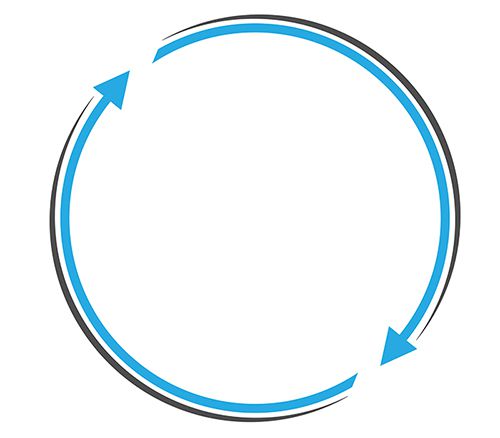
The tricky thing is to determine how much of the cuticles should be removed. Removing a minimal amount will lead to higher quality (less damaged) hair, but with higher hair care requirements to detangle the hair.
Removing more of the cuticles will cause the hair to be more damaged and thinner but makes it lower in maintenance.
Our choice is to remove a minimal amount of the cuticles, but two of our friends who source from the same manufacturer, ask the manufacturer to remove more of the cuticles. They focus more on selling retail, and retail clients are generally worse with hair care than those who make a living out of it.
Removing some of the cuticles makes the hair feel smooth. Many people prefer the feeling of this type of hair, despite it being lower quality.
A Bit Processed Cuticle Aligned Hair
Even when still attached to a girl’s head, some don’t have the healthiest hair, and others might have it dyed in a salon or permed at some point.
However, one issue is that cuticle-aligned hair is quite rare. There’s high demand, and it takes very long to grow. Manufacturers could easily mix in some lower-quality hair to save a bit on costs, which is what commonly happens. This lower-quality hair is impure in color and thus requires getting colored to a more even shade of black to look better.
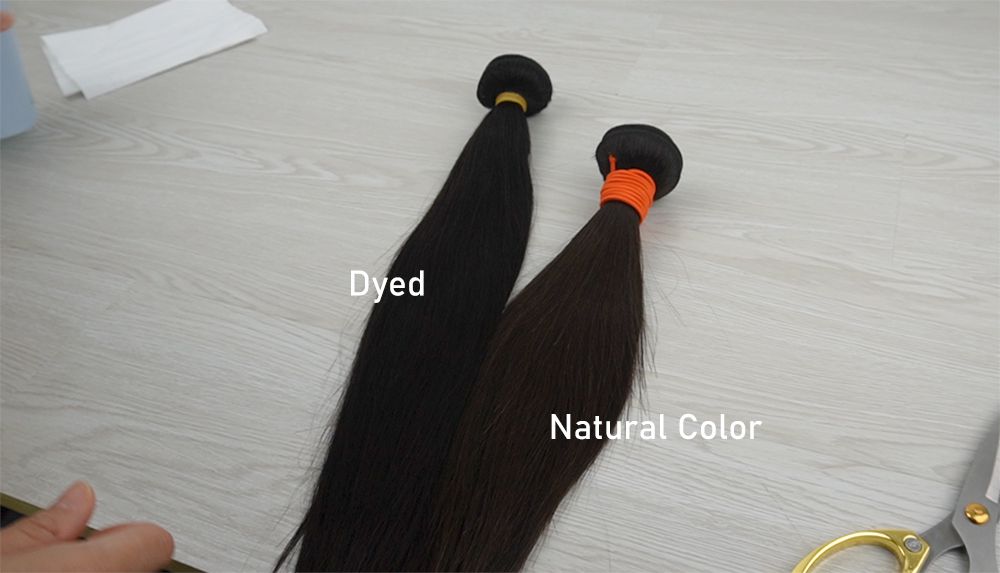
If you’re looking for the best quality Cuticle Aligned Hair, you should look for hair that doesn’t look as black. Most natural color hair has a bit of a brown shade and will light up brown or red when under certain lights.
It’s not just the dying that reduces the value of the hair. The dying is often preceded by an acid bath, which smoothens the cuticles. It damages the hair reducing its quality.
The damage isn’t enough to stop it from bleaching to #613. But when comparing it to the 100% Unprocessed Cuticle Aligned Hair, the bleached #613 result will be less healthy at this point.
You can measure hair health from its elasticity. When you hold a healthy strand of hair between two hands, about 3 inches apart, and gently start pulling on it, you will notice that it stretches. When you do the same to significantly damaged hair, it will no longer stretch and breaks instead.
This type of hair will be noticeably less healthy at #613 than the 100% unprocessed cuticle-aligned hair. But in general, these two qualities are pretty close together, and the average unknowing buyer couldn’t tell the difference.
While this type of hair is lower quality than 100% unprocessed hair, the price will be roughly the same. So our suggestion would be to always to for hair which is natural color and wasn’t dyed. It’s pretty easy to test and find out whether someone dyed the hair, and I will explain later.
Cuticle Aligned Hair & Floor Hair Mix
While it’s a mix of cuticle-aligned hair and floor hair, I feel this type of hair behaves more similarly to floor hair than cuticle-aligned hair. You could say it’s a slightly upgraded version of Remy Machine Aligned Hair.
It bleaches a bit better. Vendors selling this hair type will often claim that it is raw and will bleach to #613. We’ve tested this before with our Blue Line hair (no longer available), but I think the limit is close to #613.
This type of hair needs to be colored to a more exact shade of black, which is something you can test. As it’s relatively damaged, this hair will also get frizzy when washed.
Remy Machine Aligned Floor Hair
Floor hair generally gets processed in two ways, leading to different quality and different costs of hair. The method that leads to the best quality hair is using a non-remy to remy machine to align the hair’s cuticles. This can align most of the cuticles, but not all. Even when only a little bit of the hair isn’t aligned, the hair would still tangle. That’s why it requires an acid bath to remove some chemicals further.
Note: This kind of technology originates from China, and other countries lag in this. As many complaints about Vietnamese hair tangling, I suspect they don’t always get their formula right. Indian hair is relatively thin, making it withstand processing less than thicker hair material could. This gives Chinese processed hair an advantage compared to processed hair of other countries.
This acid bath will significantly damage the hair more than bleaching cuticle-aligned hair to 613. The damage is why you can no longer bleach it to #613 healthily, and the limit should never really be put over #27. So, whenever you see a vendor claim that you can only bleach their virgin hair to #27, now you know why. While the bit processed cuticle-aligned hair gets dyed a little bit, this type of hair will get dyed strongly. Also, this plays a role in why the hair doesn’t bleach to #613.
80% of vendors will falsely call hair from this category virgin hair. It stuck around, and now many people believe virgin hair is lower quality than raw hair. This is wrong. It simply makes much better marketing to call it Virgin Hair, as calling it what it is, Chemically Processed Floor Hair, tends to scare clients away.

Floor Hair With Fully Stripped Cuticles
This is simply the quick and dirty way to process hair. Using a remy machine to align the cuticles is quite time-consuming and costly. Throwing it in an acid bath and burning away the cuticles completely is much quicker and cheaper.
But this hair is badly damaged and has lost most of its elasticity. This means that it is prone to shedding/breakage and will not last you a long time. It often comes in a silicon coating to look nice and shiny. But once that layer has been washed off, you will see the true damaged nature of the hair.
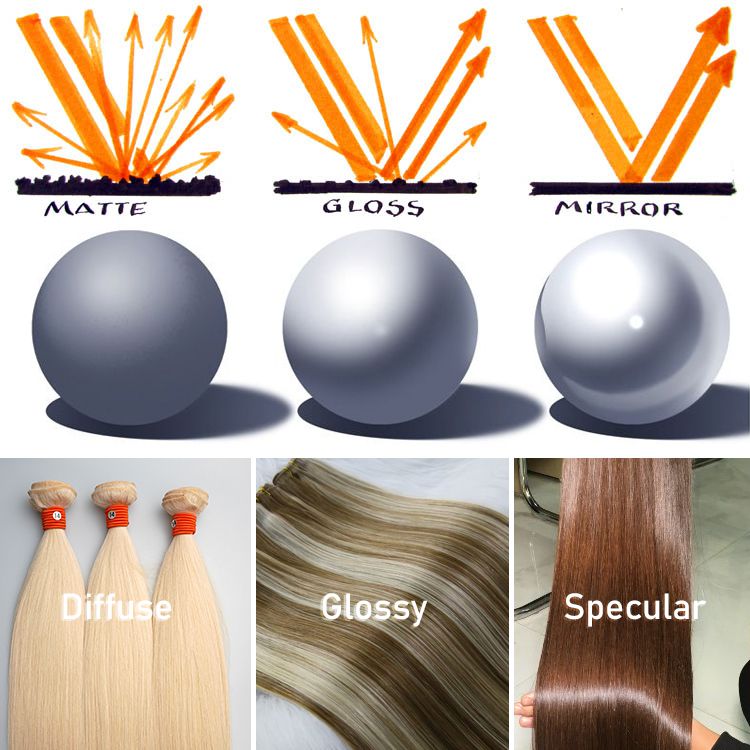
Simple science lesson: Every surface has a roughness to it on a microscopic level. If it’s rough, the light will be reflected in many directions, creating a diffuse reflection. The surface will reflect more like a mirror if it is very smooth.
Hair with cuticles present will mostly look and feel rough/coarse. Even if you coat it with silicon, it will create a glossy look. But once you remove the cuticles and apply silicon, you will get the typical super shiny look.
It’s cheap hair and sold to those who aren’t willing to spend money on it. I know vendors who sell this type of product and get most of their income from Africa and Amazon.
It’s a cheap way of handling (low-quality) floor hair. The only plus side of this hair is that it is cheap. It’s not intended to last you a long time.
Some vendors sell this hair type and mainly focus on the African market, but people from everywhere are buying it.
Hair Testing
There are different tests you could do to determine hair quality. But you should understand why you would perform tests like these and what the test results tell you about the hair quality.
Washing Test
Frizzy: Hair that is unable to contain the moisture within will get frizzy. Damage to the hair is one of the primary reasons hair cannot hold water. The five subcategories we discussed represent five different stages of damage done to the hair. The more damaged the hair is, the more frizzy it will get! This makes washing the hair one way to tell the difference between hair with intact cuticles and hair with damaged cuticles. You can see the differences in the video below.
Caveat: It takes about five years to grow 30″ hair, and it’s normal for hair to get a bit damaged the longer it gets. The following article observed that 80% of African hair no longer had the original (or cut) tip, while >50% of Caucasian and >90% of Asian hair still had. So Asian hair is much less prone to breakage and can grow longer (and thus healthier) than hair from other races.
This article might be interesting: What is normal black African hair? A light and scanning electron-microscopic study. N. P. Khumalo
Tangle: Another essential thing to discuss for the washing test is tangle.
What is tangling hair? Hair tangles when the cuticles of the hair are non-remy, or in other words, aren’t in the same direction. The hair will intertwine, making it difficult to comb through. If hair without aligned cuticles gets washed, it becomes an uncontrollable mess directly. Even if you detangle it and wash it, it will happen again. The only way to counter it is with enough silicon to smooth the hair’s surface. Not an ideal thing to have, and this is what we like to call “Real Tangle.”
If Cuticle Aligned Hair has some non-remy hair mixed in, it will tangle. If Floor Hair has been insufficiently processed, it will tangle. It can happen with both.
So, washing can also help you determine whether the hair will tangle. Just be aware that a lot of processed hair is silicon-coated. So make sure you wash it multiple times to get rid of the coating before concluding.
Some “Tangle” can happen when there’s much constant friction on the hair. For example, when I wash my hair and aggressively rub it in all directions (rather than top to bottom), I notice that my natural hair starts to tangle. As it’s my natural hair, it’s not a quality problem.
Friction is a common cause of some tangling, and people wearing high collars made of rough fabrics are more likely to get matting hair on the nape of their neck. Even some wild sleepers will experience the same thing. If you’re experiencing this problem, it’s best to wear smooth fabrics. You can solve this relatively quickly with some extra care.
Note: All human hair needs to be regularly washed (every 2-3 days). Extensions have plenty of oil buildup of oil from either your skin or the environment, and this causes hair to stick together. This is not the real tangling of the hair and can be quickly resolved with proper hair care.
So when you wash the hair and it gets frizzy, it’s pretty safe to say that your hair isn’t cuticle-aligned. If you wash the hair and it tangles up right away, it’s pretty safe to say that the hair is non-remy.
| Property | 100% Unprocessed CAH | Bit Processed CAH | Mix of CAH & FH | Remy Machine Aligned FH | Cuticle Stripped FH |
|---|---|---|---|---|---|
| Frizzy | Not Frizzy ★★★★★ | Not Frizzy ★★★★★ | Some frizzy ★★★☆☆ | Frizzy ★★☆☆☆ | Frizzy ★☆☆☆☆ |
| Tangle | No | No | No | No | No |
Bleaching Hair (Beyond) #613
Many people choose to bleach their hair to #613 as the ultimate test for raw hair. If it reaches #613, it must be good hair, right?
You couldn’t be more wrong! It’s not about if it can reach #613; it’s about how healthy it is when it reaches #613.
Bleaching causes damage. Starting with healthy hair creates the best results. If you begin with damaged hair, the result will also be more damaged. As we discussed during the washing test, damaged hair cannot contain water, and this type of hair will have reduced elasticity.
Healthy hair should still have its natural elasticity. This means that if you hold a single strand between two hands, roughly spaced 2-3″ apart, and gently pull on the hair; it should be elastic and stretch out. If the hair snaps off after applying a little tension, it’s pretty damaged/unhealthy.
100% unprocessed cuticle-aligned hair will give the best bleaching results. If the hair material is thick enough, it could bleach to a #1001, one of the lighter colors, and still be relatively healthy.
A bit processed cuticle-aligned hair will still bleach to light colors, but you can notice that it’s a bit weaker than the 100% unprocessed hair.
A mix of cuticle-aligned hair and floor hair will generally be able to bleach to #613, although we got healthier results when staying between color #27 and color #613.
Remy machine-aligned floor hair shouldn’t be bleached lighter than #27. Beyond that and it will start to get quite unhealthy.
Cuticle-stripped floor hair also has the same #27 limit. But that said, it’s already quite unhealthy before bleaching.
Note: All hair bleaches. The only hair that doesn’t bleach is synthetic. There’s also something called “Salon Hair.” This type of hair comes from girls who have had their hair dyed, which will get dyed again after turning into hair extensions. This type of hair is so full of color already that it isn’t likely to bleach well. It might go from a jet black color to a #4.
Does higher quality hair bleach faster? No, higher-quality hair bleaches slower. The chemicals used in processing hair break down some of the strands’ melanin. This makes it bleach more quickly to lighter colors, despite being already dyed.
| Property | 100% Unprocessed CAH | Bit Processed CAH | Mix of CAH & FH | Remy Machine Aligned FH | Cuticle Stripped FH |
|---|---|---|---|---|---|
| Bleaching Max Color | #613 and lighter | #613 | Close to #613 | #27 | less than #27 |
| Bleaching Speed | ±5x slower than processed hair | Normal | Normal | Normal | Normal |
Note: These are rough indications. If your type XX hair bleached close to #613, it doesn’t mean it’s a mix of CAH & FH. It could simply be Remy Machine Aligned FH. There’s even such a thing we Chinese like to call Yunnan Remy Hair. It’s believed that hair from girls from the Chinese Yunnan province is thicker, making it possible to withstand more bleaching damage. There’s simply some variation in how all manufacturers process the hair, and each has their specific formula for how long they bleach the hair, which chemicals they use, and how strongly they dye the hair.
Scraping Test
Floor hair is hair from many girls. There’s going to be some color variation within this hair. It can’t be sold in this state and requires to be dyed to a more evenly shade of black. As the production process of 4 out of 5 subcategories includes dying the hair, this is one test you could do to determine whether it was dyed.
A bit processed cuticle-aligned hair is a little bit impure in color and requires a bit of a touch-up when coloring the hair. But as floor hair is pretty impure, it requires much more coloring.
The following picture shows remy machine-aligned hair on the left and cuticle-aligned hair on the right. The left strand is drenched with black dye.
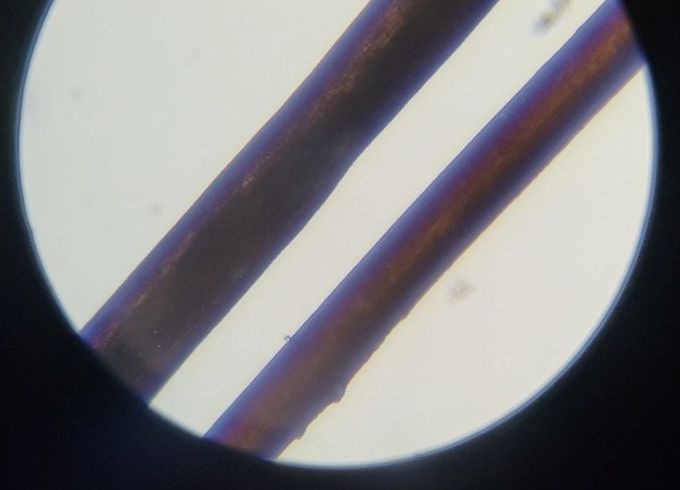
So when you get a knife or scissors and start scraping the hair, you can scrape away some of the cuticles and core of the hair. The powder will appear brown, yellow, or black if the hair is dyed. If the hair has not been colored, the powder will be white.
| Property | 100% Unprocessed CAH | Bit Processed CAH | Mix of CAH & FH | Remy Machine Aligned FH | Cuticle Stripped FH |
|---|---|---|---|---|---|
| Powder Color | White | Mostly White | Yellow/Brown/Black | Yellow/Brown/Black | Yellow/Brown/Black |
Note: As a bit processed cuticle-aligned hair has only been colored a little bit, this test might not pick up on it. But you could easily confirm it with the following test. And for CAH, the cuticle layer will produce some tiny black specks.
Acetone Test
Raw hair shouldn’t be dyed. However, a lot of the raw hair on the market gets dyed darker than its natural color.
Why? Raw hair is difficult and expensive to source. Many manufacturers end up mixing lower-quality hair in their raw hair. As the color is a bit impure, it will get dyed. A minor chemical bath often precedes this process. This will also affect the quality and how well it bleaches to light colors such as #613 or lighter.
This is one non-destructive test to check whether the hair is colored. If you put some acetone on a tissue and rub it on your raw hair bundles, it shouldn’t change in color. However, if it does, the manufacturer is dying the hair.
Caveat: Textured hair gets processed by hot steam. Some oil is added to protect the hair against heat. This could create a bit of a yellow color when rubbed with acetone. What you should be looking for are some brown or black colors.
| Property | 100% Unprocessed CAH | Bit Processed CAH | Mix of CAH & FH | Remy Machine Aligned FH | Cuticle Stripped FH |
|---|---|---|---|---|---|
| Tissue Color | No color coming out | Some color coming out | Color coming out | Color coming out | Color coming out |
Burn Test
The burn test is only to test whether the hair is or contains synthetic hair. Synthetic is plastic, and those who ever played with fire, know what happens when holding plastic over a fire. It melts. When you’re burning synthetic hair, it will also melt and create hard balls at the end of these strands.
Human and animal hair will both catch fire and burn to ash.

Note: I’ve never seen synthetic hair mixed in with cuticle-aligned hair (other than specific customized requests). If they’re added, it will mostly be in the cheaper hair.
Queries
Not all tests performed equally contribute to determining the quality of your hair extensions. Just take a look at the following examples:
Can it Hold a Curl?
Some people believe that quality hair should always be able to hold a curl, but this isn’t true. Just look at the following picture:

Natural Asian hair can be pretty thick and is almost comparable to a steel pipe. My own hair is quite thick and doesn’t maintain a curl. That doesn’t make it low quality, as my hair is quite healthy and thick.
In the left picture, you can see the difference between the left and the right side. My left side was curled first with a curling iron, and by the time my stylist curled the right part, the left part was already straightened by gravity. If you’re looking for hair that can maintain a curl, that’s entirely up to you; be aware that you will exclude some unprocessed hair.
Even for cuticle-aligned hair, curly textures require to undergo some processing. One of the reasons is to prevent tangle, and another so that the texture will last longer. This implies that hair that has been processed holds textures better than unprocessed hair. And the thinner the hair, the more likely it can maintain its texture. So processed hair can maintain a texture better.
If you’re looking for quality, don’t just look for hair that can maintain a texture.
| Property | 100% Unprocessed CAH | Bit Processed CAH | Mix of CAH & FH | Remy Machine Aligned FH | Cuticle Stripped FH |
|---|---|---|---|---|---|
| Hold a Curl | ★☆☆☆☆ | ★★☆☆☆ | ★★★☆☆ | ★★★★☆ | ★★★★★ |
Should you wear your hair extensions before selling it?
Your objective in testing hair quality should be to find out which subcategory of hair it fits in and if it’s a good one in this category. With the above tests, it only requires a fraction of a bundle.
Imagine that you’re just starting and have difficulty finding a vendor. Ten different vendors have caught your interest, and you want to try them all. A full install from every vendor might be 2-3 bundles + a lace product, costing you around $250 for shorter lengths. This means you would spend $2500 to test 10 different vendors.
The average client for our free sample pays about $30 (shipping fee). This means they can test two of our qualities for $30, while they would pay $500 to test both qualities if they try a full install. Imagine finding nine other vendors, who also offer a sample for $30, and you’d spend $300 on collecting data for ten different vendors. That’s still $2200 cheaper than testing ten full installs.
Let’s say that only 2 out of 10 of these vendors have a quality that interests you. This means that you saved about $220 for eight different vendors without the quality you were looking for. That’s an immediate savings of $1760. With those savings, you could quickly test out the remaining two vendors who passed your initial test with a full install.
Mostly starting a hair business is about collecting data and experience. Testing ten different vendors for relatively cheap will contribute to your success much more than trying ten different vendors for quite expensive. After all, if the first bundle fails your test, there’s no need to have two more bundles, as they will fail the same test.
To conclude: Start with testing as little hair as possible, and only do a 2nd round of testing for vendors which passed your initial test.
Can I compare my own hair to Asian Hair Extensions?
Mainly the reason why people wear hair extensions is that their own hair is giving them some issues. May it be their natural hair being too thin, balding, not long enough, or simply requiring a protective style to support their natural hair health. In other words, people start wearing hair extensions because their hair tends to be causing problems for them.
There are plenty of scientific studies about the differences between hair from different ethnicities. One common conclusion is that Asian hair tends to be more healthy and less prone to damage.
So it’s always going to be about finding the best hair care routine for the hair you’re currently wearing.
What else can be important for quality?
The weight of your bundles. Weigh your bundles/product without rubber bands to see if it matches what the vendor claims.
The length of your bundles. It is either too short, precisely right, or a bit longer. If you have a little extra length, you can still cut some dead ends off or cut some to make the hair look fuller.
The fullness of your bundles. Chinese single-drawn hair comes at roughly 10% fullness. This means that only 10% of entire bundles reach the full length. Other lengths get mixed in, which will be done in a fixed ratio. For example, if the shortest length in a 26″ bundle is 16″, it’s going to look a lot fuller than when the shortest length is only 6″. Pay attention to what you’re getting, especially with bundles over 22″.
Silicon coating. Hair with silicon looks nicer, but it can also hide the hair’s true nature. It’s not necessarily a bad thing. But make sure that you test your bundles by washing away the silicon and see what’s hiding underneath that layer.
Regularly washing/conditioning. Vendors get tons of complaints, and the quality is not always a problem. Many people still benefit from essential hair care advice, like asking them to wash their hair every 2-3 days as the average Asian girl would. Use the right products, and avoid too much heat.
Summary
If you found our article interesting or useful, please share it with your friends who might benefit from this information. The table below pretty much sums up what we discussed.
If you have any further questions, please don’t hesitate to contact us through the comments, iMessage/WhatsApp: +86 135 3369 3283, cristina@bossique.com, or DM us at www.facebook.com/bossique.
| Property | 100% Unprocessed CAH | Bit Processed CAH | Mix of CAH & FH | Remy Machine Aligned FH | Cuticle Stripped FH |
|---|---|---|---|---|---|
| Lifespan | 2-5 years | 2-4 years | Up to 1.5 year | 6 months – 1 year | A few months |
| Washing Test Frizzy | Not Frizzy ★★★★★ | Not Frizzy ★★★★★ | Some frizzy ★★★☆☆ | Frizzy ★★☆☆☆ | Frizzy ★☆☆☆☆ |
| Washing Test Tangle | No | No | No | No | No |
| Bleaching Test Bleaching Max Color | #613 and lighter | #613 | Close to #613 | #27 | less than #27 |
| Bleaching Test Bleaching Speed | ±5x slower than processed hair | Normal | Normal | Normal | Normal |
| Scraping Test Powder Color | White | Mostly White | Yellow/Brown/Black | Yellow/Brown/Black | Yellow/Brown/Black |
| Acetone Test Tissue Color | No color coming out | Some color coming out | Color coming out | Color coming out | Color coming out |
| Burning Test | Pass | Pass | Pass | Pass | Pass |
| Hold a Curl? | ★☆☆☆☆ | ★★☆☆☆ | ★★★☆☆ | ★★★★☆ | ★★★★★ |
| Shedding with normal use | Hair is elastic: ★★★★★ | Hair is elastic: ★★★★★ | Hair is lost some elasticity: ★★★★☆ | Hair lost some elasticity: ★★★★☆ | Lost all elasticity: ★★☆☆☆ |
